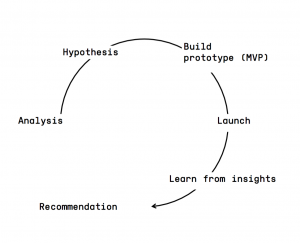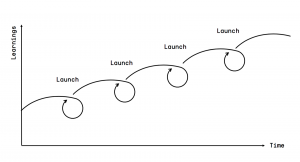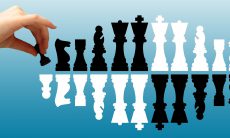One of the most critical elements of the modern design process is research. Design teams work long hours to make sure that they not only have access to the right information, but also that they can understand what the incoming raw research findings are regarding that information. Based on the findings and the identified patterns, the team comes out with a hypothesis, a mission we have to address, a challenge we have to face, and a problem we need to solve.
Then we build the prototype (based on UX and design principles), we launch it, and we monitor how it performs. We also track possible flaws, the interactions around it, the dynamics, and the energy around it. This is an agile yet linear process. It takes time, and there are occasions that either the feedback for the prototype appliance is not the best one, or the time it gets back to the team, the team is occupied with delivering something else. Therefore, the process is ideal, tested, and working; but the outcome is not always a success. This is either because there are break-ups, or because not all the stages contribute the same amount to the process.
Some years ago, we started connecting more and more devices on the Internet. It was really fascinating to be able to connect elements and things with each other. One way or another, it was like giving life to them. We could interact with them, optimize them, ask them to do things, and make decisions based on their input. That was when everything changed. Instead of having a linear, stage-based approach, we started being able to develop interactions and products based on seamless feedback.
Reconfiguration of a product wasn’t hardware-driven, but software-driven. We became able to understand in real time how things perform, how people interact with them, and instead of waiting for the next version or the next bit release, we started launching more version faster to a bigger audience.
IoT is about not changing the design process, but completely disrupting it. The reason for this is that the product or the design approach will be self-learning, optimized via over the air software updates, and be more along the lines of a platform with different versions than a fixed final outcome.
At the end of the day, connected devices, along with how people react to something, become the driving force behind each new design. Design and new user experience approaches used to ask for a more dominant role in our lives. Nowadays, the IoT helps them become something purely innovative; like our car’s ABS. It is always there but you don’t notice and value its existence until you need it.






